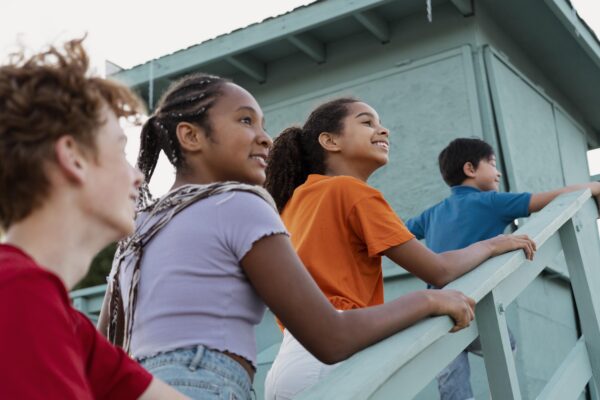Migrant education is a critical issue as migrant students face challenges such as language barriers, adapting to the new school environment, and adjusting to the cultural context of the new country. Due to particular circumstances, individuals may feel emotionally fragmented and find it difficult to express their spontaneous, creative selves (Mironova et al., 2021). Therefore, it is vital to use innovative educational methods that not only aim at learning the new language and acquiring cognitive skills but also contribute to the psychosocial development of this target group. One such educational method is gamification, which leverages game elements and game-like design techniques. The integration of gamification in the learning context combines the fun and joy of play with the process of learning. This is achieved by utilizing technology, applications, websites, as well as 3D virtual worlds, alongside the fragmented reality.
Migrant students often struggle to achieve a sense of belonging in their new school environment. Through gamification, students can engage with their peers, build connections, and foster teamwork, cooperation, and communication. This sense of community helps in their identity formation as they integrate their old cultural background into the new one (Grant, 2020).
Gamification creates a friendly and non-threatening environment for migrant students, allowing them to freely develop their skills. Gamified in-class activities provide immediate feedback, set achievable goals, and reward successful efforts. This leads to the enhancement of self-confidence and self-efficacy (Antonopoulou et al., 2022; Kapp, 2012).
Incorporating cooperative games and team-building activities into the school curriculum promotes the practice of social skills such as teamwork, empathy, and communication while working towards common goals. Moreover, decision-making games foster adaptability and critical thinking (Antonopoulou et al., 2022). Games that address emotions, conflict resolution, or ethical dilemmas cultivate emotional intelligence and empathy for others. The design of gamified activities can also facilitate cultural understanding and adaptation by introducing cultural elements and narratives within educational games. Migrant students can explore different cultural perspectives and histories (Gagliardi, 1995).

Resources
Antonopoulou, H., Halkiopoulos, C., Gkintoni, E., & Katsimpelis, A. (2022). Application of Gamification tools for identification of neurocognitive and social function in distance learning education. International Journal of Learning, Teaching and Educational Research, 21(5), 1-34. https://doi.org/10.26803/ijlter.21.5.19
Bizota, A. (2021). Gamification in Refugee Education: How to gamify a refugee classroom using Classcraft. (Undergraduate Dissertation, Hellenic Open University).
Filella, G., Ros-Morente, A., Oriol, X., & March-Lianes, J. (2018). The assertive resolution of conflicts in school with a gamified emotion education program. Frontiers in Psychology, 9, 1-8. https://www.frontiersin.org/articles/10.3389/fpsyg.2018.02353/full
Gagliardi, R. (Ed.). (1995). Teacher training and multiculturalism national studies. Paris, France: International Bureau of Education. https://unesdoc.unesco.org/ark:/48223/pf0000102238
Grant, M. (2020). The Impact of Gamification on the Feeling of Belonging Among Members of an Online Learning Community. (Master’s Thesis). Department of Education, Memorial University of Newfoundland. https://research.library.mun.ca/15070/1/thesis.pdf
Kapp, K. M. (2021). The Gamification of Learning and Instruction: Game-based Methods and Strategies for Training and Education. Wiley.
Mironova, O., Ruonala, L. A., & Ivanova, O. V. (2020). Gamification as a Method of Successful Adaptation of Migrants in European Countries: Socio-psychological and Economic Aspects. Frontier Information Technology and Systems Research in Cooperative Economics. Studies in Systems, Decision and Control, 36, 1041-1051. https://doi.org/10.1007/978-3-030-57831-2_111





